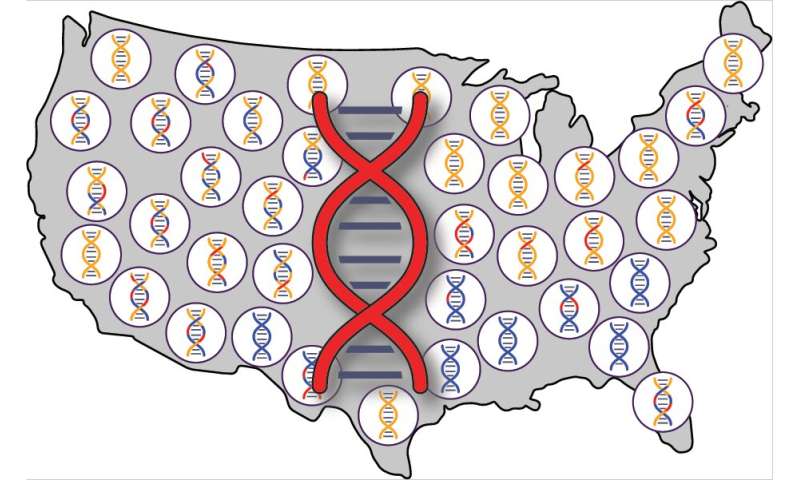
Many people in the U.S. do not belong to Native American communities but still carry bits of Native American DNA, inherited from European and African ancestors who had children with indigenous individuals during colonization and settlement. In a new study published 19th September in PLOS Genetics, Andrew Conley of the Georgia Institute of Technology and colleagues investigate this genetic legacy and what it can tell us about how non-natives migrated across the U.S.
When Europeans colonized North America, infectious diseases and violent conflict greatly reduced the numbers of Native Americans living on the continent. Their DNA lives on, however, not only in recognized Native American tribes, but also in the descendants of Europeans and enslaved Africans that settled within the country. To better understand this genetic reservoir, researchers analyzed patterns of Native American ancestry from genomic data collected from descendants of African slaves, and Spanish and Western European settlers.
The analysis showed that African descendants had low levels of Native American ancestry, consistent with the two groups mixing in the Antebellum South, followed by African American dispersal in the Great Migration. European descendants had the lowest amount of Native American ancestry, and showed a historical pattern of continual but infrequent mixing between local Native American groups and European settlers as they moved westward. Spanish descendants had the highest and most variable amounts of Native American ancestry, and their profiles showed regional patterns reflecting the different waves of Spanish-descended immigrants that moved into the country. Native American DNA was sufficient to distinguish between descendants of very early Spanish settlers in the U.S., known as Hispanos or Nuevomexicanos, and descendants of subsequent immigrants arriving from Mexico.
“The presence of Native American genetic ancestry among individuals who do not self-identify as Native American can also be leveraged to broaden genomic medicine and include population groups currently underserved and underrepresented in genomic databases,” said author Andrew Conley. “For future studies, we are very interested to use this rich genomic resource to study the distribution of health-related genetic variants in the Native American genomic background.”
Source: Read Full Article
